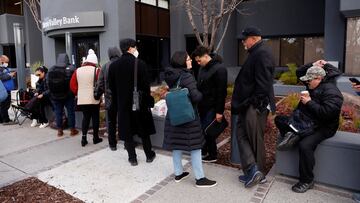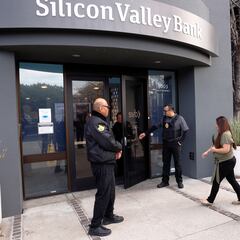What happens to your money if a bank collapses?
During the Great Depression a series of bank runs created the necessity to restore faith in the US banking system which led to the creation of the FDIC.

The sudden collapse of Silicon Valley Bank, the second-largest bank failure in US history, raised concerns about what would happen to customers’ money held at the financial institution. While the bank was federally insured, the Federal Deposit Insurance Corporation (FDIC) only covers insured deposits and financial instruments up to a certain limit.
The Biden administration moved quickly to reassure that the bank’s depositors would be made whole, beyond the federal guarantee, to avoid contagion from the defunct financial institution. The sixteenth largest bank in the United States was put into distress largely because its clients, tech companies and venture capitalists who had deposits far exceeding that guarantee, rushed to withdraw their funds to ensure that they would have money for things such as payroll after Silicon Valley Bank made a financial transaction that spooked its customers.
What happens to your money if a bank collapses?
The specter of a bank collapsing is one of depositors’ greatest fears, that your money will be out of reach. That was the driving force behind the creation of the FDIC in 1933 by the Franklin Delano Roosevelt administration after a series of bank runs during the Great Depression. The agency collects insurance premiums from banks so that in the event that bank becomes insolvent deposits at the financial institution are guaranteed up to a limit, at no expense to the US taxpayer.
The standard deposit insurance coverage limit is $250,000 per depositor, per ownership category, per FDIC bank. So if you have accounts in more than one ownership category you may be eligible for more than the current minimum of $250,000 in protection at a single FDIC-insured bank. Should you have money at another FDIC-insured bank, you would also be eligible for the minimum coverage for that institution too, even if you already had to file a previous claim at a different failed bank.
However, not all financial products offered by a bank are covered by FDIC insurance such as annuities and mutual funds nor stocks and bonds including municipal securities. Contents of safe deposit boxes are not insured, but holders are typically granted access the first business day after the bank closure.
When will the FDIC make payments of insured deposits?
Related stories
In the event that a deposit payoff is necessary, the FDIC is required under law to make payments of insured deposits “as soon as possible” and according to the agency the goal is within two business days. For funds in excess of the insured amount, the depositor will receive a “Receiver’s Certificate” which is a claim against the estate of the failed bank for those funds. As the closed bank’s assets are liquidated, the depositor would receive payments on their claim.
But the FDIC will first try to perform a “Purchase and Assumption Transaction” process. Through this method, the agency tries to arrange the transfer of depositors’ insured accounts to a healthy bank, whereby they would have access to their insured funds. In this scenario, there’s a good chance that all a depositor’s funds will be safe. Loans and other assets may also be purchased by the “assuming bank.”


